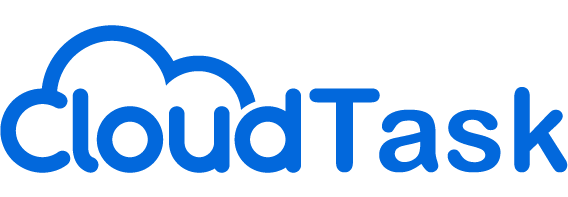Imagine dramatically increasing your lead generation while cutting costs and maintaining flexibility in your sales process. Outsourcing lead generation budget Sales Development Representatives (SDRs) can make this a reality. In this post, we will guide you through the different models of SDR outsourcing, the advantages and potential challenges, cost comparisons, and tips for maximizing success. Stay with us as we unlock the potential of lead generation through outsourcing SDRs.
Short Summary
SDR outsourcing is a cost-effective solution for lead generation and qualification, providing businesses with access to expertise, scalability, and flexibility.
Businesses should assess the experience, industry knowledge, and training of an SDR partner while considering location & language proficiency when selecting one.
Clear communication & expectations must be established in order to maximize success through regular feedback & progress monitoring.
Understanding SDR Outsourcing

SDR outsourcing is a cost-effective solution for generating and qualifying leads, allowing businesses to focus their sales teams on closing deals while an outsourced SDR team handles the top of the sales funnel. These teams investigate prospects, converting them into qualified leads ready for your sales team to engage with. Outsourcing SDRs can provide cost savings, access to expertise, scalability, and flexibility.
Different models of SDR outsourcing include SDR as a Service, SDR Pods, and part-time, contractual, or one-time models. Each model offers its own set of advantages, allowing businesses to choose the one that best meets their specific lead generation needs.
Defining SDR Outsourcing
SDR outsourcing refers to contracting outbound prospecting a sales professional, typically managed by a third-party company, to carry out lead qualification and lead generation activities such as prospecting, cold calling, and emailing.
SDR as a Service is a popular outsourcing solution that gives businesses access to a certified team of SDRs at an affordable rate. Instead of employing an in-house team, businesses can benefit from this cost-effective solution. The third-party outsourcing company oversees all aspects of the sales reps, the sales development program including onboarding, training, and resource management, allowing businesses to focus on closing deals.
Types of Outsourced SDR Models
Three main types of outsourced SDR companies and models are available to cater to different business needs. SDR as a Service offers a complete sales development solution with a dedicated team of experienced SDRs.
SDR Pods provide a more customizable approach, with the outsourcing company hiring, training, and managing SDRs and sales researchers and constructing a pipeline to keep your Account Executives fully booked.
The part-time, contractual, or one-time models offer flexibility for businesses with specific project-based requirements or limited budgets. Each model has its own set of advantages, allowing companies to choose the one that aligns best with their sales strategy.
Reasons to Outsource SDRs
Outsourcing SDRs offers numerous benefits, including cost savings, access to greater resources and expertise, flexibility, and valuable insights and analytics. By outsourcing SDRs, businesses can focus on their core activities, such as closing deals, while the outsourced SDR firm or team handles lead generation and qualification.
Additionally, outsourcing can provide companies with the expertise to recognize new prospects and assist in creating focused outreach tactics, enabling them to expand their sales possibilities and reach new customers.
Choosing the Right SDR Outsourcing Partner

Selecting the right SDR outsourcing partner is crucial to the success of your lead generation efforts. It is important to consider factors such as the scope of work, expertise, market reputation, communication skills, cultural fit, pricing, metrics, KPIs, and alignment with company values. When making a decision, take into account the size, budget, and objectives of your organization, in addition to examining the SDR company’s offerings, fees, performance metrics, and communication plan.
Moreover, it’s essential to establish a clear and transparent communication channel with outsourcing your SDR team or outsourcing partner. This will help you stay updated on their progress, provide feedback, and ensure that the outsourced SDR team is aligned with your company’s goals and objectives.
Assessing Experience and Industry Knowledge
Evaluating the experience and industry expertise of your SDR outsourcing partner is crucial for success. Ensure that the outsourcing company has top sales professionals with a proven track record in cold outbound sales within your industry, as this will enable them to better understand your target market’s pain points and solution-seeking behavior.
Additionally, assess the training and support that the company provides to its own outsourced sales development representatives and SDRs, as this can impact their ability to generate high-quality leads.
Location and Language Proficiency
When selecting an outsourced SDR companies or outsourcing partner, consider the location of the company and the language proficiency of their SDRs. If customized communication with prospective customers is critical, selecting an off-shore SDR outsourcing company may not be the best choice. On the other hand, if outbound activity and cost-effectiveness are the main priorities, overseas outsourcing could be a suitable option.
The language proficiency required for an SDR outsourcing partner would be contingent upon the target market of your company.
Collaboration and Reporting
Collaboration and reporting are essential aspects of a successful SDR outsourcing partnership. Ensure that the outsourced SDR company provides transparency and access to the data/reporting necessary to monitor their progress and evaluate the results they’re driving for your business.
Establish objectives for progress and provide thorough training and ongoing support to marketing teams of the outsourced SDRs, as this will help them operate productively and efficiently. Maintaining open communication and providing regular feedback will also contribute to the success of the partnership.
Strategies Employed by Outsourced SDRs

Outsourced SDRs utilize various strategies to generate qualified leads, such as cold calling, cold emailing, and LinkedIn outreach. These strategies enable outsourced sales SDRs to reach potential customers through multiple channels, increasing the likelihood of generating high-quality leads.
It also allows businesses to monitor the progress of SDRs and evaluate the efficacy of their efforts through various metrics and KPIs.
Cold Calling Techniques
Outsourced SDRs employ various cold-calling techniques to maximize conversions among new prospects, such as warming up leads with multiple touchpoints, leveraging predictive dialers, and objection handling on cold calls.
However, it is important to note that the conversion rate of cold calls into set appointments is less than 2%, which means that cold calling should be combined with other strategies for optimal results.
Cold Emailing Strategies
Cold emailing strategies employed by outsourced SDRs include personalized emails, follow-up emails, and A/B testing to optimize their outreach. Personalized emails enable SDRs to tailor their message to the recipient, increasing the likelihood of engagement.
Follow-up emails help SDRs stay top of mind with prospects and enhance the chances of a response. A/B testing allows SDRs to evaluate different versions of their emails and identify the most successful approach.
LinkedIn Prospecting
Outsourced SDRs leverage LinkedIn as a primary prospecting platform, employing personalized messaging, a multi-channel strategy, and an understanding of the customer to support their efforts. Linked. Prospecting provides SDRs with the opportunity to target specific audiences, foster relationships with potential customers, and develop a more personalized approach to lead generation.
However, it can be challenging to distinguish oneself from the competition and track the success of campaigns on LinkedIn, making it essential to set achievable expectations and maintain open dialogue with the SDRs.
Weighing the Pros and Cons of SDR Outsourcing

SDR outsourcing offers significant advantages such as cost savings, access to expertise, scalability, and flexibility. However, there are potential challenges, including the loss of control over the sales process and the lack of feedback from the market.
It is essential to carefully weigh the pros and cons of SDR outsourcing to determine if it is the right solution for your business, considering factors such as your industry, target market, and internal resources.
Advantages of SDR Outsourcing
Some of the key benefits of SDR outsourcing include enhanced efficiency, more emphasis on core business operations, and accelerated progress toward desired results. Outsourcing enables businesses to conserve time and resources, lower costs, and focus on their core operations while an experienced team handles lead generation and qualification.
Moreover, outsourcing provides access to a broader pool of talent and expertise, as well as access to more advanced technology and tools.
Potential Challenges
Despite the numerous advantages, there are potential challenges associated with SDR outsourcing. One significant concern is the loss of control over the sales process and the lack of feedback from the market, as most third-party SDR services focus on booking meetings rather than understanding market nuances.
Additionally, businesses may encounter challenges when hiring and retaining in-house SDRs, such as training costs, employee benefits, and turnover expenses. It is crucial to assess the potential challenges of an in house SDR team or outsourcing and develop strategies to mitigate these risks.
Cost Comparison: SDR Outsourcing vs. In-House SDRs
When comparing the costs of using SDR outsourcing companies and in-house SDRs, it is essential to consider not only the direct expenses but also the hidden costs associated with each option. Outsourced SDRs generally provide a more cost-efficient solution, with the pricing of an outsourced SDR at around $2,490 per month, compared to the average cost of a single in-house SDR hire ranging from $6,000 to $10,000.
SDR Outsourcing Pricing

The pricing of SDR outsourcing is typically lower than hiring in-house SDRs, with the approximate cost at $2,490 per SDR per month with average tenure or $30,000 per year. This is significantly less than the average cost of a single in-house SDR hire in 2023, which was estimated to be between $6,000 and $10,000.
By outsourcing SDRs, businesses can save on expenses such as recruitment, onboarding, training, and retention.
Hidden Expenses of In-House SDRs

In-house SDRs may incur hidden expenses that are not immediately apparent, such as training costs, employee benefits, turnover expenses, workspace and equipment costs, and manager’s salary. These costs can accumulate and make the hiring process for an in-house SDR more costly than contracting with an external company.
By outsourcing SDRs, businesses can potentially save on these expenses and reinvest their resources internally.
Tips for Maximizing SDR Outsourcing Success
To ensure success with SDR outsourcing, it is important to set realistic expectations, maintain open communication with sales development team, and understand the associated costs and potential ROI. By closely monitoring the performance of the outsourced SDR team and providing regular feedback, businesses can optimize their lead generation efforts and ensure that their investment in SDR outsourcing delivers the desired results.
Setting Realistic Expectations
Setting realistic expectations is crucial when outsourcing SDRs. Ensure clear communication and set expectations with the outsourcing company, as well as provide thorough training and ongoing support to the outsourced team of SDRs.
Success can be measured by monitoring SDR metrics such as cold calls made, meaningful conversations scheduled, and cold outreach campaigns initiated. By setting achievable goals and closely monitoring progress, businesses can maximize the success of their SDR outsourcing efforts.
Maintaining Open Communication

Open communication is critical for the successful outsourcing of SDRs. Ensure that the outsourced SDRs possess strong communication skills and utilize time management tools to effectively convey the value of your product and maximize their productivity.
Providing regular feedback and updates will also help the you hire an outsourced SDR team stay aligned with your company’s goals and objectives, maximizing the success of the partnership.
Understanding Costs and ROI
In order to evaluate the costs and ROI of outsourcing SDRs, it is essential to assess the experience and industry knowledge of the outsourcing partner, as well as taking into account the hidden expenses of in-house SDRs.
By understanding the costs associated with each option and the potential return on investment, businesses can make informed decisions about whether SDR outsourcing is the right solution for their lead generation needs.
Summary
In conclusion, outsourcing SDRs can provide significant benefits, such as cost savings, access to expertise, scalability, and flexibility. By carefully weighing the pros and cons, setting realistic expectations, maintaining open communication, and understanding costs and ROI, businesses can maximize the success of SDR outsourcing and unlock the potential of lead generation. It’s time to consider how SDR outsourcing can revolutionize your sales process and drive your business forward.
Frequently Asked Questions
Which are the 4 steps of the lead generation process?
The Lead Generation Process comprises of four key steps: targeting the right customers, crafting attractive content, distributing content via channels, and tracking customer engagement.
By following these steps, businesses can effectively generate more leads and increase their conversions.
What does lead generation person do?
A lead generation person’s role is to identify potential customers and create interest in a company’s products or services. This is done through both research and outbound prospecting, promotion, and capturing leads from various sources such as website visits, email campaigns, referrals, etc.
The goal of the lead generation person is to convert prospects into paying customers.
How do you make money from lead generation?
Making money through lead generation involves finding potential customers that match a client’s ideal customer profile and then connecting those leads with the client. This process allows businesses to grow their customer base while saving time in searching for these leads.
Ultimately, it provides a great return on investment for both the lead generator and the client.
What are the requirements for lead generation?
In order to effectively generate leads, it is essential to focus on five key criteria: relevancy, engagement, potential size, interest level, and timing. These criteria help to evaluate a lead’s potential and can ultimately provide valuable insight into whether they are worth pursuing or not.
Through proper attention to these requirements, your lead generation efforts will be successful.
What do you mean by sales?
Sales refer to the process of providing goods or services in exchange for an agreed-upon monetary amount. This includes activities such as building relationships, creating solutions, and negotiating deals with customers.
Ultimately, these sales strategies enable organizations to bring products and services to the marketplace and generate revenue.








